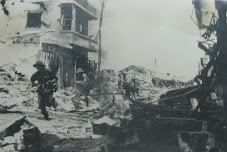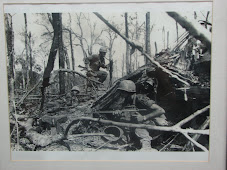Changing Rights and Freedoms – Aboriginal People
Time line of Government Policies/Events
1930s
During the 1930s the plight of Aboriginal Australians became worse.
During the Depression many lost their family endowment payments, unemployed were refused access to relief work.
Aboriginal Protection Board forced them back onto reserves, which became overcrowded.
1937 – First conference of Commonwealth and state bodies concerned with Aboriginal matters is held in Canberra.
Policy of removing children from their families to aid assimilation gained momentum. This issue later became known as the "stolen generations’. Many of these children suffered abuse in their foster homes or in the institutions that they were placed.
Assimilation was government policy – this meant that Aboriginal people were forced to give up their culture and traditions and adopt mainstream Australians values and culture.
1938 – Aboriginal Day of Mourning held on the 150th anniversary of the arrival of European settlement.
1950s
1951 - Paul Hasluck – Federal Minister for Territories promoted the policy of assimilation for all Aboriginal people at a Native Welfare Conference.
1960s
1962 - Aboriginal Australians were given the right to vote in Commonwealth elections and finally in Queensland and Western Australia.
1965 - The Federal Government replaced the Assimilation policy with a new policy of Integration. This policy recognised the rights of Aboriginal people to run their own affairs, keep their customs and be equal to other Australians.
1970s
1972 - The Whitlam government (Labor Pty) worked to improve indigenous relations and introduced the policy of Self Determination.
Self determination is the right of a group to choose and control its own destiny and development.
1990s
Native Title and Reconciliation have been among the most important issues since the 1990s in Australia for non-Aboriginal and Aboriginal people.
The Council for Aboriginal Reconciliation Act was passed by federal parliament in 1991.
They developed a vision statement that helped define reconciliation.
The council said that three facts must be recognised:
Firstly, indigenous people were the original inhabitants of this land.
Secondly; they had become disadvantaged because they were dispossessed of that land, separated from families and denied the benefits of the nation’s social and economic development.
Thirdly; all Australian should live in harmony.
Use the above information to construct your own timeline of government policies and events affecting Aboriginal people.
1965 – Freedom Rides
Aboriginal and non-Aboriginal activists set out across northern NSW.
They were inspired by Freedom Rides in America.
The activists were known as Student Action for Aborigines (SFA).
They were from Sydney university.
Charles Perkins was one of their leaders.
He was the first Aboriginal to graduate for uni.
They wanted to spread the knowledge that Aboriginal Australians on reserves and living on the fringe of country towns were not allowed in many clubs, hotels and swimming pools.
They travelled to towns in rural NSW such as Moree and Walgett where they held protests.
They encountered violence and sympathy.
They aimed to stop this discrimination.
They succeeded in making many Australians aware of the discrimination.
The Stolen Generations
· Throughout early and mid twentieth century large numbers of Aboriginal children were taken from families.
· They were forced to abandoned their culture, language and way of life.
· It was part of the assimilation policy.
· These children were known as the Stolen Generations.
· The practice continued in some places until the 1970s.
· The children were placed in missions often run by churches where girls were trained in domestic service and given a basic education.
· Boys were trained in stock work.
· The children were sent out into the community when they reached the age of 14.
· When paid they received low wages if any.
· 1995 Prime Minister, Paul Keating (Labor Pty) established an inquiry into the stolen generations
· The inquiry found white Australians thought they were doing the right thing.
· Some Aboriginal children were mistreated but some did have positive experiences.
· They inquiry found that human and legal rights were breached as the children were forcibly removed.
· In NSW more than 10,000 children were removed and lost links with their families.
· Calls were made for an apology to the Stolen Generations – This apology was not given until 2008 by Prime Minister Kevin Rudd.
Use the above information to make your mind map.
The 1967 Referendum
1958 FCAATSI (The Federal Council for the Advancement of Aborigines and Torres Strait Islanders) formed. They played a significant role in bringing about the referendum.
Before 1967 – Aboriginal laws made by individual states.
Many overseas countries were critical of the treatment towards Aboriginal people.
Aboriginal people wanted to be counted in the Census.
And they wanted the Commonwealth government to be able to make laws for all Aboriginal Australians.
They needed to change the constitution to be able to do this.
Section 127 stated that Aboriginal people could be counted in the Census
Section 51 stated that the Commonwealth government could not make decisions for the Aboriginal people.
Referendum – citizens vote ‘yes’ or ‘no’ to a question.
On the 27th May 1967 the Holt Government (Liberal Pty) held a referendum.
90% of final votes counted said ‘yes’ – lowest votes come from country towns.
Commonwealth powers to pass laws for Aboriginal people did not come about for another 10 years.
The Commonwealth did although provide more money for housing and health.
Changes to the constitution were supported by all political parties.
Use the above information to answer the following short response question.
Why was the 1967 referendum held?
Subscribe to:
Post Comments (Atom)



No comments:
Post a Comment